State Museum-Reserve "Tsaritsyno": description, prices, photos, address. How to get to the Tsaritsyno Museum-Reserve?
In the south-east of Moscow there is the largest and most beloved State Museum-Reserve “Tsaritsyno” by the townspeople.
History of the estate
In 1775, construction of a country royal residence began in the village of Chernaya Gryad. The decree on the start of construction was issued by Empress Catherine II.
Initially, the construction of the estate was entrusted to the famous Russian architect V.I. Bazhenov. He decided to deviate a little from the traditional classical style and create a new one based on the asymmetry of the buildings. According to the author, it was supposed to consist of several small palaces, decorated in their own style.
The Figure Bridge was built first. It looked like a fortress gate with massive towers and loophole windows. This is a truly unique building by a Russian architect of the 18th century. In 1778, the Middle Catherine and Small Palaces were erected, which were intended for the Empress to live in.
At the same time, the construction of the Grand Palace began, and in 1784, the construction of the Bread House. intended for storing food and preparing food for the imperial table. It was also planned to arrange rooms for servants here.
![]()
After a preliminary inspection, Catherine II was dissatisfied with the work of the architect, and Bazhenov was removed from work. His place was taken by no less than M. Kazakov. By order of the Empress, the Grand Palace was completely dismantled.
I tried to preserve a lot from Bazhenov’s project and find a compromise option. For this purpose, he left the planning structure of the palaces, but additionally imposed a kind of “Gothic” decoration on it. As a result of such an original solution, a new style appeared - pseudo-Gothic, experts more often call it “Russian Gothic”. It should be noted that this is the only palace in Europe made in this style.
But Catherine II’s dream of a new residence was not destined to come true. During the Empress's lifetime, the palace was not completed. And in 1797, after her death, construction stopped altogether.
The unique palace complex began to gradually revive only at the end of the last century. In 1993, this historical place became known as a museum-reserve. It was included in the list of valuable monuments of Russian history and culture.
Tsaritsino today
The Tsaritsyno Museum-Reserve has changed in recent years. Muscovites and numerous guests of the capital enjoy their holiday here. Visitors are strongly impressed by the modern and well-kept museum complex and picturesque ponds.
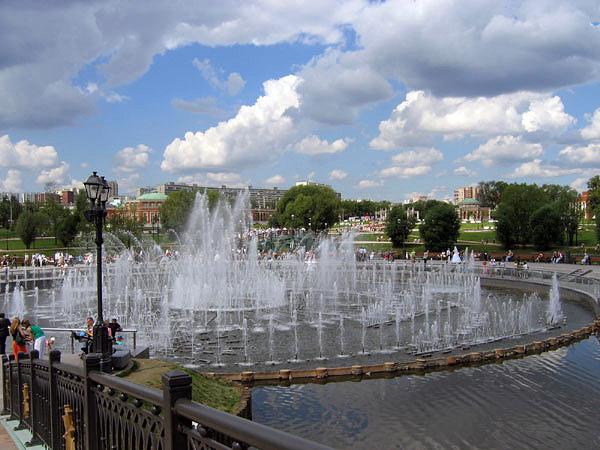
The Tsaritsyno Museum-Reserve also became famous for the fact that during the Second World War, Elder Matrona of Moscow lived in one of the houses, not far from the Church of the Blessed Virgin Mary.
A park
Its basis was a regular garden, characterized by a clear geometry of plantings and alleys.
In Catherine's time, the fashion for them passed away, and English irregular gardens came to replace them. To organize such a planting in Tsaritsino in 1784, a gardener from London, Francis Reed, was invited.
However, the true heyday of Tsaritsyn Park occurred at the beginning of the 19th century. Various “artistic ideas” were used for decoration: pavilions, gazebos, bridges, grottoes.
I. V. Egotov, an outstanding architect, played a huge role in the creation of the park.
Unfortunately, at the end of the last century, the park was in a neglected state - it turned into a neglected, unkempt forest park.
In 2007 it was restored. It was freed from self-seeding plantings and dead wood. Based on archival documents, the historical network of paths and paths of the park was restored.
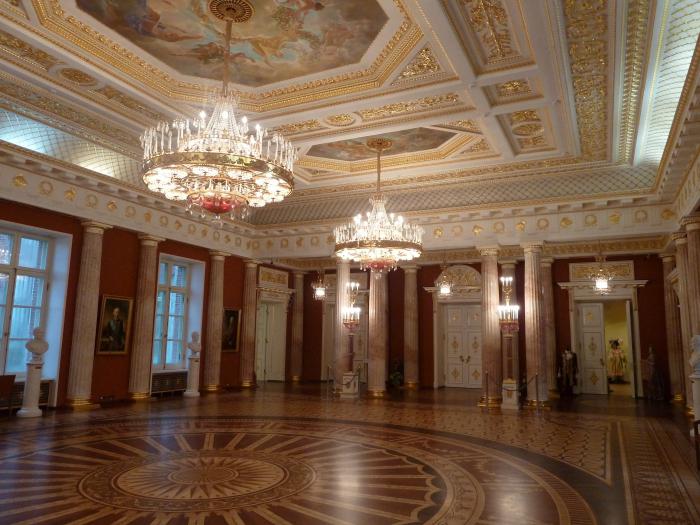
Ponds of the reserve
“Tsaritsyno” - a museum-reserve, a photo of which we posted in our article, has two ponds - Upper and Lower Shipilovsky. They appeared on the territory of the estate by the middle of the 17th century, after the construction of dams on the Yazvenka, Gorodnya and Cherepishka rivers.
Mills were built on the dams. The ponds formed one harmonious cascade that was created during the time of Tsar Boris Godunov.
Today, Borisovsky and Tsaritsynsky ponds are considered the oldest and largest in terms of length and area in the modern capital.
The total area of the reservoirs exceeds 180 hectares.
Grand Palace
Many guests come to the Tsaritsyno Museum-Reserve to see this particular monumental structure. The Grand Palace was erected in 1793 by F. M. Kazakov. It was built on the site of an old palace, which was built according to the design of V.I. Bazhenov.
When creating a new palace, Matvey Kazakov faced a difficult task. It was necessary to fit the new building into the already established ensemble.
At the end of the 19th century, the surviving remains of the roof were removed from the old Bazhenov palace and the coverings of the towers were completely dismantled. All that remains of the palace are the walls.
Reconstruction of the palace began in 2005. In two years, the picturesque ruins, which had been destroyed for almost two centuries, turned into a museum complex.
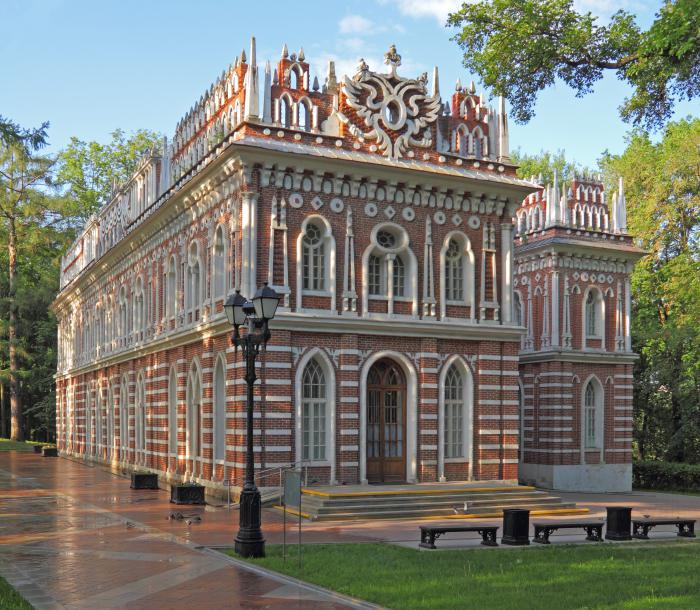
In 2007, the opening of the palace ensemble took place.
Nowadays, the restored palace seems to be reborn. Based on the plans of M. Kazakov, the openwork decor of the building’s facade was made.
The main (Catherine) hall of the palace, the area of which exceeds 300 square meters. meters, has a grand staircase and adjacent formal living rooms, decorated in the style of the 18th century.
The hall is decorated with a magnificent statue of Catherine II, made of marble, by A. Opekushin.
The remaining halls now house exhibitions with the participation of various Moscow museums.
Small Tsaritsyn Palace
This building is one of the few buildings of the ensemble in Tsaritsyno that has retained its name since the time of Bazhenov.
The Small Tsaritsyn Palace is one of three intended for Catherine II. It was the smallest and most comfortable.
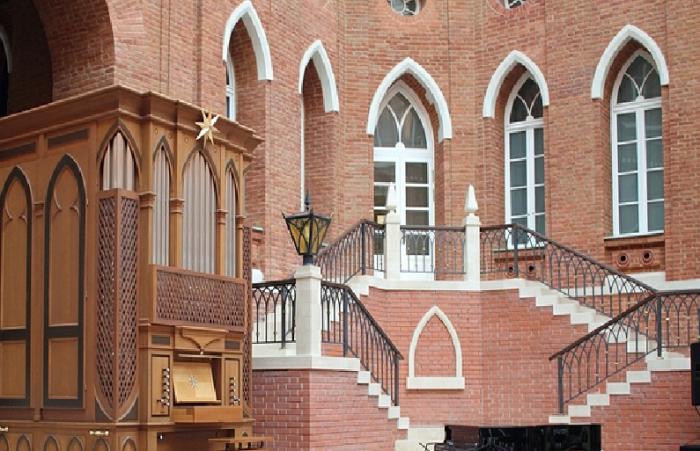
In 1804, when Tsaritsyno became available to the public, this building was leased to the Frenchman Lecan, expelled from Russia in 1812, who organized the “Coffee House” here.
By the middle of the 20th century, only dilapidated walls remained from the palace.
The palace was completely restored in 1996. It became part of the Tsaritsyno Museum-Reserve.
Kitchen building
Built by architect V.I. Bazhenov in 1778. It was called "Bread House". In the 19th century, a hospital for peasants operated here, and later a zemstvo school. Then the rooms in the building were rented out to summer residents for the summer. After the October Revolution and until the 1970s of the last century, communal apartments were located here.
At the beginning of 2006, the Bread House was restored. Today it is the main building for holding thematic exhibitions.
Singing fountain
There is a unique structure on the territory of the reserve that invariably attracts the attention of guests of the complex. We are talking about the “Singing Fountain”. Its diameter is 55 meters. The fountain consists of 807 jets, which synchronously rise to a height of 15 meters to the sound of a melody. The lighting consists of 3312 lamps. The fountain is only open in spring and summer.

Where is the museum
Museum-Reserve "Tsaritsyno", whose address is st. Dolskaya, 1, always welcomes guests. The easiest way to get to the museum is to use the metro. You need to get to the Tsaritsyno station. When you go out onto the street, you should go straight, and in a minute you will see the Tsaritsyno Museum-Reserve. You now know how to get here, so don’t delay your trip.
Operating mode
The Tsaritsyno Museum-Reserve is open every day from 11.00 to 18.00. The park can be viewed from 6.00 to 24.00 hours. On Saturday, opening hours are extended by one hour. The ticket office closes one hour before the complex closes.
Ticket prices
You can enter the park for free. “Tsaritsyno” (museum-reserve) sets ticket prices quite reasonable - a single ticket for visiting the Bread House and the Grand Palace is 350 rubles. Students, children under 12 years old, disabled people, parents with many children, pensioners pay 50 rubles.
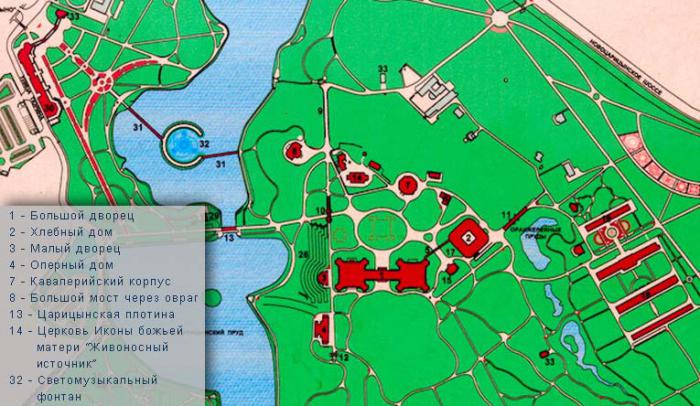
And one more piece of advice. Anyone who wants to visit the Tsaritsyno Museum-Reserve will definitely need a map indicating the attractions of the complex. You can buy it in the pavilion at the Main Entrance.
